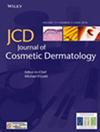To establish, evaluate and compare three recurrence prediction models for keloid patients using machine learning methods.
We enrolled 301 keloid patients who underwent surgery and postoperative radiotherapy, dividing them into a training set (70%) and a validation set (30%). Three recurrence prediction models were established in the training set: the logistic regression model, the decision tree model, and the random forest model. We then evaluated and compared the performance of these models in the validation set, using metrics such as accuracy, sensitivity, specificity, recall, precision, kappa coefficient, and the area under the ROC curve (AUC).
We developed three machine learning-based prediction models for keloid recurrence. KAAS, mean arterial pressure levels, postoperative complications, and the proportion of inflammatory cells played crucial roles in these models. The decision tree model outperformed both the random forest and logistic regression models in terms of accuracy, and it also exhibited the highest overall precision. Regarding AUC, logistic regression performed the best, followed by random forest and decision trees.
This study established three prediction models for keloid recurrence using machine learning techniques, highlighting the significance of KAAS, blood pressure levels, postoperative complications, and inflammatory cell proportions. When compared from various dimensions, the logistic regression model demonstrated the most favorable prognostic performance in terms of AUC.



